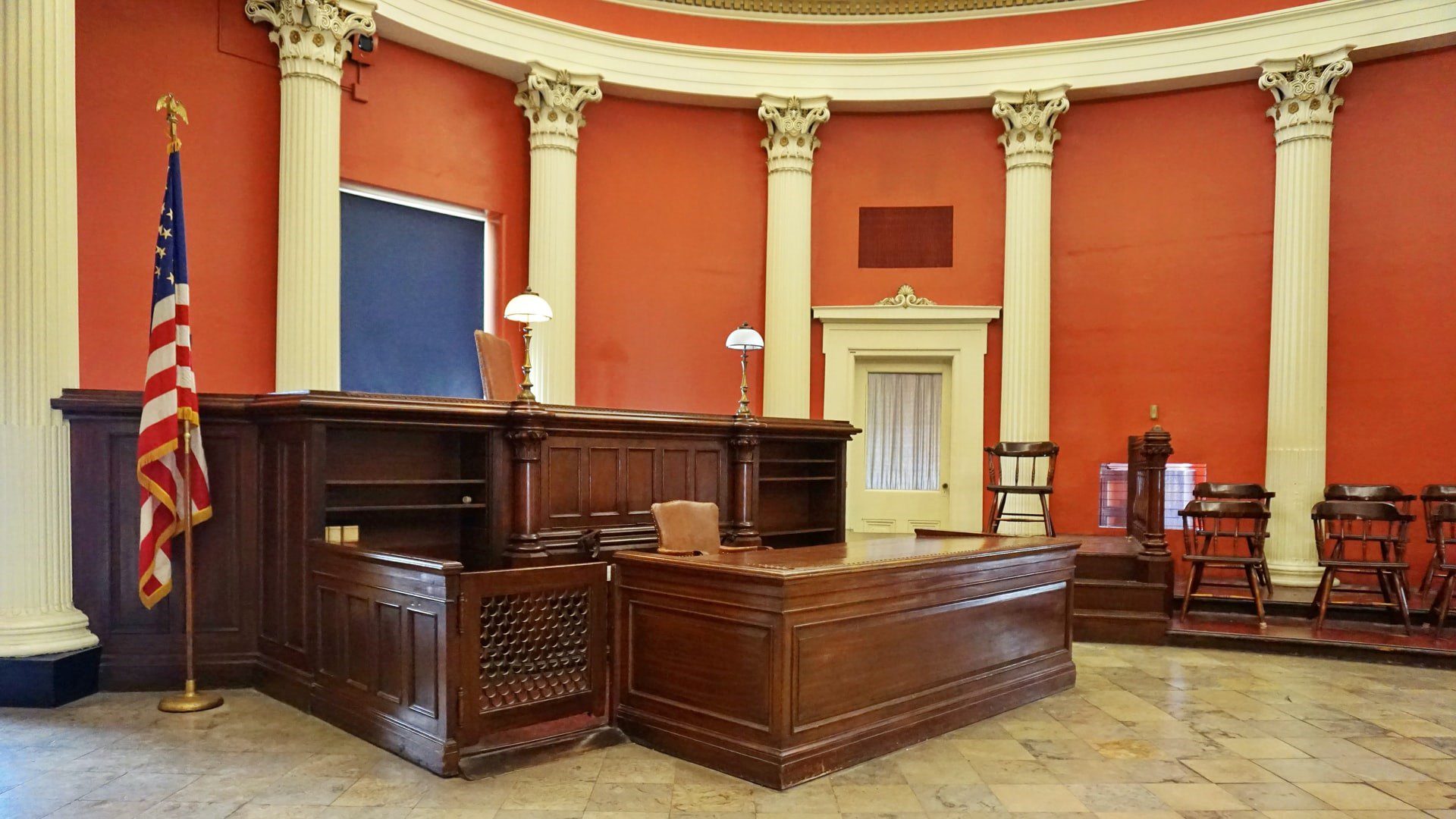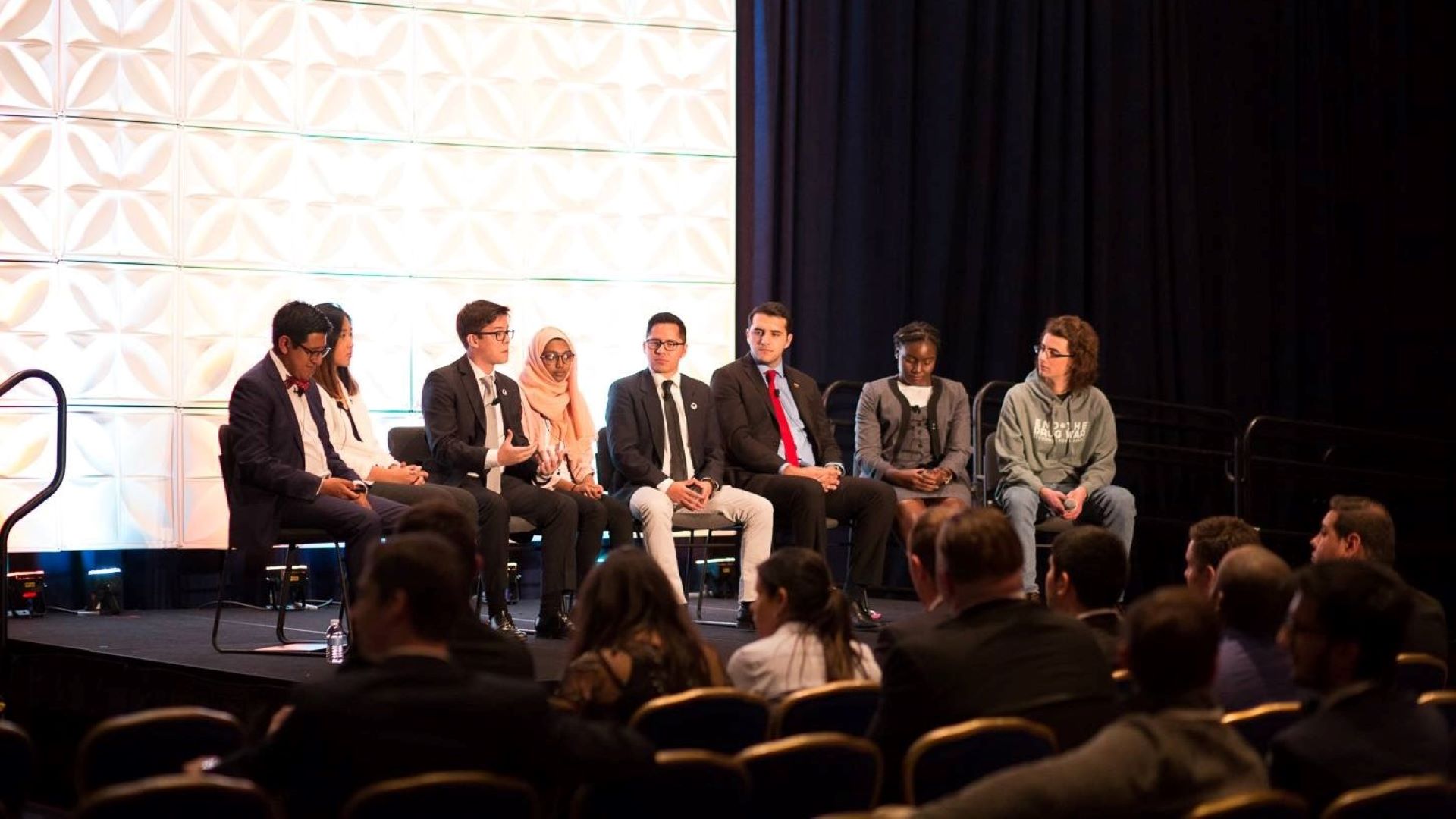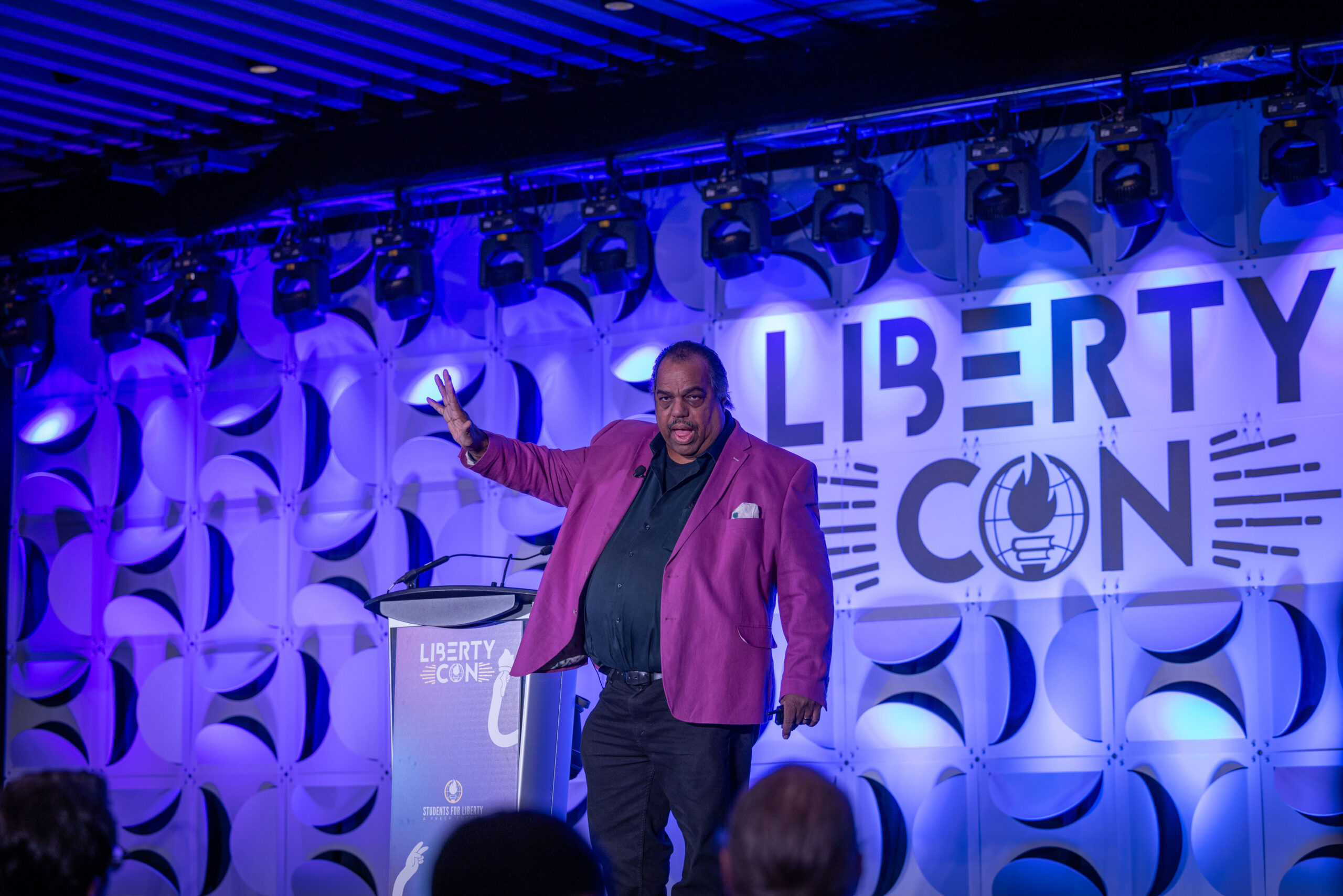Almost two centuries before the women’s lib movement and a full century before the suffragettes, not all women were quiet subordinates to men. In this 1996 essay, historian Jim Powell provides us with an illuminating account of the brilliant Mary Wollstonecraft, an 18th-century author and philosopher who never minced her words in defense of equal rights for women. She lived only 38 years but left behind a principled legacy any lover of liberty can embrace.
Wollstonecraft’s case for equal rights was not a collectivist one; it was, as Powell explains, a deeply individualist one. Rights, she felt, do not come from governments. They belong to each and every person by virtue of their birth and their nature. They do not belong to groups and should never pit any group of individuals against another group. And the recognition of rights never absolves anybody of the responsibility for their own individual lives.
One gets the clear impression from her writings that were Wollstonecraft alive today, she might have some cogent advice along these lines for activists of all kinds: politics may be the route to change bad laws and enforce genuine rights, but once that’s accomplished, politicians have no more responsibility to peaceful individuals in society than to leave them alone. — Lawrence W. Reed
In Western Europe during the late 18th century, single women had little protection under the law, and married women lost their legal identity. Women couldn’t retain a lawyer, sign a contract, inherit property, vote, or have rights over their children.
As Oxford law professor William Blackstone noted in his influential Commentaries on the Laws of England (1758): “The husband and wife are one person in law; that is, the very being or legal existence of the woman is suspended during the marriage or at least is incorporated and consolidated into that of the husband: under whose wing, protection and cover, she performs every thing.”
Then along came passionate, bold Mary Wollstonecraft, who caused a sensation by writing A Vindication of the Rights of Woman (1792). She declared that both women and men were human beings endowed with inalienable rights to life, liberty, and the pursuit of happiness. She called for women to become educated. She insisted women should be free to enter business, pursue professional careers, and vote if they wished. “I speak of the improvement and emancipation of the whole sex,” she declared. “Let woman share the rights, and she will emulate the virtues of man; for she must grow more perfect when emancipated.”
Wollstonecraft inspired people because she spoke from the heart. Although she was reasonably well-read, she drew more from her own tumultuous experience. “There is certainly an original defect in my mind,” she confessed, “for the cruelest experience will not eradicate the foolish tendency I have to cherish, and expect to meet with, romantic tenderness.”
She dared do what no other woman had done, namely, pursue a career as a full-time professional writer on serious subjects without an aristocratic sponsor. “I am then going to be the first of a new genus,” she reflected. It was a harsh struggle, because women were traditionally cherished for their domestic service, not their minds. Wollstonecraft developed her skills on meager earnings. She dressed plainly. She seldom ate meat. When she had wine, it was in a teacup, because she couldn’t afford a wine glass.
Contemporaries noted Wollstonecraft’s provocative presence — thin, medium height, brown hair, haunting brown eyes, and a soft voice. “Mary was, without being a dazzling beauty … of a charming grace,” recalled a German admirer. “Her face, so full of expression, presented a style of beauty beyond that of merely regular features. There was enchantment in her glance, her voice, and her movements.”
Mary Wollstonecraft was born April 27, 1759, in London. She was the second child and eldest daughter of Elizabeth Dixon, who hailed from Ballyshannon, Ireland. Mary’s father, Edward John Wollstonecraft, was a handkerchief weaver. He decided to become a gentleman farmer after he got an inheritance from his father, a master weaver and residential real estate developer, but farming was a bust. The family moved seven times in 10 years as their finances deteriorated. Edward drank heavily, and Mary often had to protect her mother from his violent outbursts. She had rocky relations with her siblings.
Mary’s formal schooling was limited, but one of her friends in Hoxton, outside London, had a respectable library, and Mary spent considerable time exploring it. Through these friends, she met Fanny Blood, two years older and skilled at sewing, drawing, watercolors, and the piano. She inspired Mary to take initiative cultivating her mind.
Spurred by family financial problems, Mary resolved to somehow make her own way. She pursued the usual opportunities open to smart but poor young women. At 19, she got a job as live-in helper for a wealthy widow who proved to be a difficult taskmaster.
Young Adulthood
Three years later, in 1781, Mary tried and failed to establish a school at Islington, North London. Then Mary, Fanny, and Mary’s sisters, Eliza and Everina, started a school nearby at Newington Green. After initial success, that, too, failed. She then worked as a governess for an Irish family and saw firsthand the idleness of landed aristocrats. These discouraging experiences were compounded by the death of Fanny Blood from tuberculosis. After Mary’s mother died in 1782, she — not her oldest brother — assumed primary responsibility for taking care of her volatile father.
Meanwhile, through her Newington school experience, Wollstonecraft met many local Dissenters whose religious beliefs put them outside the tax-supported Anglican Church. Among these Dissenters was minister and moral philosopher Richard Price, who was in touch with Thomas Jefferson, Benjamin Franklin, Marquis de Condorcet, and other radical thinkers of the day. Wollstonecraft also met scientist Joseph Priestley, schoolteacher John Hewlett, and Sarah Burgh, widow of radical author James Burgh. Although Wollstonecraft retained her faith in the Anglican Church, she stood out as a maverick and became good friends with these people.
Dissenters promoted reform of Britain’s cozy political system. The House of Lords consisted of aristocrats who inherited their positions. The House of Commons was chosen by the very few males who were enfranchised—just 15,000, about one-half percent of adult males —determined the outcome of an election. The Test and Corporation Acts disenfranchised religious Dissenters. Moreover, no town had gained the right to representation since 1678, which meant that dynamos of the Industrial Revolution like Birmingham and Manchester were excluded.
The Influence of Joseph Johnson
Hewlett encouraged Wollstonecraft to write a pamphlet on education and submit it to Joseph Johnson, the radical publisher and bookseller with a shop at St. Paul’s Churchyard. He was known as a visionary entrepreneur who backed a number of unknowns including the poet-printmaker William Blake. Johnson published works by Joseph Priestley and poets William Cowper and William Wordsworth, too. He distributed materials for Unitarians.
Hewlett’s suggestion turned out to be a lifeline because, as Wollstonecraft biographer Claire Tomalin explained, “Mary was homeless again, without a job or a reference; she had nothing to live on, and she was in debt to several people. She had no marriage prospects. She was 28, with a face that looked as though it had settled permanently into lines of severity and depression around the fierce eyes … her most remarkable trait was still that she had refused to learn the techniques whereby women in her situation usually attempted to make life tolerable for themselves: flattery, docility, resignation to the will of man, or God, or their social superiors, or all three.”
Johnson told Wollstonecraft that she had talent and could succeed if she worked hard. He published her pamphlet in 1786 as Thoughts on the Education of Daughters; with Reflections on Female Conduct, in the More Important Duties of Life. Sales were negligible, but the work launched Wollstonecraft’s literary career. She sent her author’s fee to the impoverished Blood family and redoubled her efforts. “I must exert my understanding to procure an independence and render myself useful,” she wrote. “To make the task easier, I ought to store my mind with knowledge — The seed time is passing away.”
By 1788, Johnson offered her steady work. She translated books from French and German into English. She served as an assistant editor and writer for his new journal, The Analytical Review. She contributed to it until her death, perhaps as many as 200 articles on fiction, education, sermons, travelogues, and children’s books.
Johnson was a good man. He helped Wollstonecraft find lodgings. He advanced her money when needed. He dealt with her creditors. He helped her cope with her father’s chaotic situation. He calmed her bouts of depression. “You are my only friend,” she confided, “the only person I am intimate with — I never had a father, or a brother — you have been both to me.”
Wollstonecraft met more radicals who visited Johnson, including William Blake, Swiss painter Henry Fuseli, and Johnson’s publishing partner, Thomas Christie. On one occasion, she met philosopher William Godwin and Thomas Paine, the Englishman who helped inspire the American Revolution by writing Common Sense. Wollstonecraft dominated the conversation. “I heard her very frequently,” Godwin recalled, “when I wished to hear Paine.”
The French Revolution
The outbreak of the French Revolution in July 1789 triggered explosive controversy. In November, Richard Price gave a talk before the Society for Commemorating the Glorious Revolution of 1688, defending the right of French people to rebel and suggesting that English people should be able to choose their rulers — an obvious challenge to the hereditary monarchy. This alarmed Edmund Burke, a member of Parliament previously known for having defended the American Revolution. Burke wrote Reflections on the Revolution in France (November 1790), a rhetorically brilliant attack on natural rights and a defense of monarchy and aristocracy.
Burke’s ideas as well as his swipes at Price made Wollstonecraft indignant. Drawing on the ideas of John Locke and Price, she rushed into print with A Vindication of the Rights of Men, among the earliest of some 30 replies to Burke. Although this polemic was repetitious and disorganized, and Wollstonecraft overdid her attacks on Burke as vain, unprincipled, and insensitive — she had an impact. She faulted Burke for being blind to poverty: “Misery, to reach your heart, I perceived, must have its cap and bells.” She denounced injustices of the British constitution which evolved during the “dark days of ignorance, when the minds of men were shackled by the grossest prejudices and most immoral superstition.” She singled out the aristocratic practice of passing family wealth to the eldest son: “the only security of property that nature authorizes and reason sanctions is, the right a man has to enjoy the acquisitions which his talents and industry have acquired; and to bequeath them to whom he chooses.”
She lashed out at arbitrary government power:
Security of property! Behold, in a few words, the definition of English liberty.… But softly — it is only the property of the rich that is secure; the man who lives by the sweat of his brow has no asylum from oppression; the strong man may enter — when was the castle of the poor sacred? — and the base informer steal him from the family that depend on his industry for subsistence.… I cannot avoid expressing my surprise that when you recommended our form of government as a model, you did not caution the French against the arbitrary custom of pressing men for the sea service.
Wollstonecraft’s work, and everyone else’s for that matter, was later dwarfed by Thomas Paine’s far more powerful reply to Burke — The Rights of Man — but she established herself as an author to reckon with.
A Vindication of the Rights of Woman
She had generally supposed that when revolutionaries spoke of “man,” they were using shorthand for all humanity. Then on September 10, 1791, Talleyrand, former Bishop of Autun, advocated government schools that would end at eighth grade for girls but continue on for boys. This made clear to Wollstonecraft that despite all the talk about equal rights, the French Revolution wasn’t intended to help women much. She began planning her most famous work, A Vindication of the Rights of Woman. She wrote for more than three months and was finished January 3, 1792. Johnson published it in three volumes.
She despised the government class. “Taxes on the very necessaries of life,” she wrote, “enable an endless tribe of idle princes and princesses to pass with stupid pomp before a gaping crowd, who almost worship the very parade which costs them so dear.”
She specifically cited laws that “make an absurd unit of a man and his wife; and then, by the easy transition of only considering him as responsible, she is reduced to a mere cipher … how can a being be generous who has nothing of its own? or virtuous who is not free?”
Wollstonecraft issued an early call for women’s suffrage: “I really think that women ought to have representatives, instead of being arbitrarily governed without having any direct share allowed them in the deliberations of government.”
Wollstonecraft attacked those like collectivist Jean-Jacques Rousseau who wanted to keep women down. He had written, “The education of the women should always be relative to the men. To please, to be useful to us, to make us love and esteem them, to educate us when young, and take care of us when grown up, to advise, to console us, to render our lives easy and agreeable; these are the duties of women at all times, and what they should be taught in their infancy.”
Wollstonecraft believed education could be the salvation of women: “the exercise of their understanding is necessary, there is no other foundation for independence of character; I mean explicitly to say that they must bow only to the authority of reason, instead of being the modest slaves of opinion.” She insisted women should be taught serious subjects like reading, writing, arithmetic, botany, natural history, and moral philosophy. She recommended vigorous physical exercise to help stimulate the mind.
To be sure, she had a naive faith that the same governments that restricted women could inexplicably be trusted to run schools uplifting women. Twentieth-century government schools have been catastrophes for women as well as men, graduating large numbers at high cost without the most fundamental skills.
Wollstonecraft called for eliminating obstacles to the advancement of women. “Liberty is the mother of virtue,” she asserted, “and if women be, by their very constitution, slaves, and not allowed to breathe the sharp invigorating air of freedom, they must ever languish like exotics, and be reckoned beautiful flaws of nature.”
She envisioned a future when women could pursue virtually any career opportunities: “Though I consider that women in the common walks of life are called to fulfill the duties of wives and mothers, by religion and reason, I cannot help lamenting that women of a superior cast have not a road open by which they can pursue more extensive plans of usefulness and independence.” Finally: “How many women thus waste life away the prey of discontent, who might have practiced as physicians, regulated a farm, managed a shop, and stood erect, supported by their own industry, instead of hanging their heads surcharged with the dew of sensibility.”
With A Vindication of the Rights of Woman, Wollstonecraft emerged in a class by herself. She went beyond her contemporary Catherine Macaulay who had written passionately about educating women. Wollstonecraft was opposed by “Bluestockings” like Hannah More, Elizabeth Montagu, and Hester Chapone who had fared well by making the most of the subordinate position of women. A succession of women novelists — Fanny Burney, Clara Reeve, Charlotte Smith, and Elizabeth Inchbald, for instance — had portrayed women who achieved heroic moral stature, but they didn’t always celebrate women with brains.
A Vindication of the Rights of Woman sold out within a year, and Johnson issued a second edition. An American edition and translations into French and German followed.
Wollstonecraft crossed the English Channel so she could see the French Revolution for herself. She was welcomed by expatriates such as the American patriot Joel Barlow, English poet Helen Maria Williams, and Thomas Paine. She sided with liberal Girondists who, including Marquis de Condorcet, favored a constitutionally limited government and equal rights for women. But she was horrified at how fast the totalitarian Jacobins seized power and launched the Reign of Terror.
Wollstonecraft dreamed that someday men and women would nurture each other as equals. “The man who can be contented to live with a pretty, useful companion, without a mind, has lost in voluptuous gratifications a taste for more refined enjoyments,” she wrote, “he has never felt the calm satisfaction that refreshes the parched heart like the silent dew of heaven — of being beloved by one who could understand him.”
Alas, she had an agonizing time applying these ideas to her own life. She became infatuated with the eccentric genius Henry Fuseli, but he was married and brushed her off after extended flirtation. While still in France, she fell in love with an American adventurer named Gilbert Imlay, who was always looking for a scheme to strike it rich. They had a daughter, Fanny, but he lost interest in both of them and walked out. Wollstonecraft attempted suicide twice. After the second incident, when she was being dragged out of the Thames, she renewed her resolve: “it appears to me impossible that I shall cease to exist, or that this active, restless spirit, equally alive to joy and sorrow, should only be organized dust. Surely something resides in this heart that is not perishable — and life is more than a dream.”
While recovering from despair over Imlay, she took a three-month break with Fanny in Scandinavia and produced one of her most poignant works, Letters Written During a Short Residence in Sweden, Norway and Denmark. The letters were addressed to the unnamed American father of her child. They provide a travelogue laced with commentary on politics, philosophy, and her personal life. After witnessing the French Terror, she tempered her hopes for social change:
An ardent affection for the human race makes enthusiastic characters eager to produce alterations in laws and governments prematurely. To render them useful and permanent, they must be the growth of each particular soil, and the gradual fruit of the ripening understanding of the nation, matured by time, not forced by an unnatural fermentation.
Throughout the book, Wollstonecraft struggled to cope with her grief about Imlay, and she conveyed an immediacy and tenderness that touches the heart. “If ever there was a book calculated to make a man in love with its author, this appears to me to be the book,” remarked William Godwin.
Relationship with William Godwin
Wollstonecraft decided to pursue her acquaintance with Godwin, calling on him April 14, 1796. He had a large head, deep-set eyes, and a thin voice. “He seems to have had some charm which his enemies could not detect or his friends define, but which had a real influence on those who attained his close friendship,” reported Godwin biographer George Woodcock.
Like Wollstonecraft, he had started a school, but his ideas were too radical, and the effort failed. His literary career had begun with a dull political biography, a book of sermons and some potboiler novels. Then London publisher George Robinson offered to pay Godwin enough of an advance that he could work out his philosophy. The result was Enquiry Concerning Political Justice (1793), describing his vision of a harmonious society without laws or war. The book established him as England’s foremost radical thinker.
Godwin courageously spoke out against the British government’s campaign to suppress the Corresponding Societies, which were debating clubs interested in revolutionary ideas. Godwin wrote public letters supporting defendants. He charged that the government’s campaign was illegal since none of the defendants had committed revolutionary acts of violence. These writings won widespread sympathy for the defendants, and further prosecution was abandoned.
At the time Wollstonecraft called, Godwin was a 42-year-old bachelor courting Amelia Alderson, a doctor’s daughter. But he was intrigued with Wollstonecraft, despite his initial impression that she talked too much. He invited her to a dinner party the following week. Included were James Mackintosh and Dr. Samuel Parr, both of whom had written rebuttals to Burke’s Reflections on the Revolution in France.
After Alderson rejected Godwin, he became more responsive to Wollstonecraft, and her passion overwhelmed him. “It was friendship melting into love,” he recalled. But Wollstonecraft was haunted by fear of another betrayal. Godwin reassured her that he longed for a relationship between equals. Her passion surged again. “It is a sublime tranquility,” she wrote him, “I have felt it in your arms.” By December, she was pregnant. Both Wollstonecraft and Godwin had criticized marriage as a vehicle for exploitation, but they tied the knot on March 29, 1797. She rejoiced that she had found true love at last.
She went into labor during the early morning of Wednesday, August 30, 1797. She was attended by one Mrs. Blenkinsop, an experienced midwife. After 11:00 that night, a daughter was born — Mary, who grew up to be Mary Shelley, author of Frankenstein. For a while, it appeared things were fine, but three hours later, Mrs. Blenkinsop notified Godwin that the placenta still hadn’t come out of the womb. The longer the placenta remained, the greater the risk of infection. Godwin called a Dr. Poignand, who succeeded in removing much of the placenta. Wollstonecraft reported that the procedure was the most excruciatingly painful experience of her life.
That Sunday, she began suffering chills, an ominous sign of infection. Doctors offered wine to help ease the pain and tried other measures to stimulate her body to eject the remains of the placenta. Wollstonecraft continued to decline. She died Sunday morning, September 10, 1797. Godwin was so overcome that he didn’t attend the funeral, held at St. Pancras church where they had been married just five months before. She was buried in the churchyard.
Posthumous Influence
Soon afterwards, ever-loyal publisher Joseph Johnson issued Godwin’s edition of the Posthumous Works of the Author of a Vindication of the Rights of Woman, together with Godwin’s candid memoir about her. Although Godwin believed telling all would boost her reputation, it unleashed a firestorm of controversy, and her unsettled personal life became an easy excuse to belittle her ideas.
But as author Virginia Woolf remarked about Wollstonecraft decades later, “We hear her voice and trace her influence even now among the living.” American crusaders for equal rights like Margaret Fuller, Lucretia Mott, and Elizabeth Cady Stanton were all inspired by A Vindication of the Rights of Woman.
In recent years, the women’s movement has become linked with preferential treatment and hatred of men. Today, happily, more people are rediscovering Mary Wollstonecraft, who established the individualist roots of equal rights. She took responsibility for her life. She educated herself. She showed how a woman can succeed with her wits. She urged everyone to achieve his or her human potential. She spoke out for vital economic liberties. She demanded justice. She championed relationships based on mutual respect and love.








